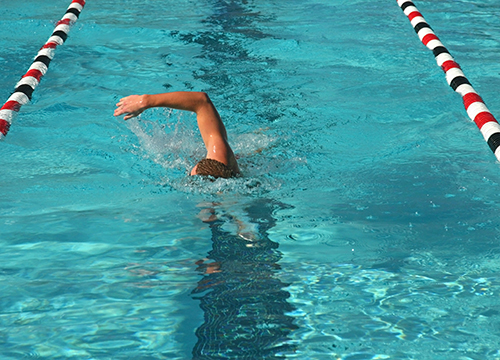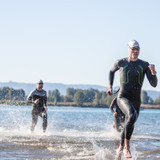Debunking Three Swimming Myths
Shop Prescription Swim Goggles

To say there's a lot of “bad information” out there regarding swimming would be an understatement. There are tons of myths and misconceptions that both amateur and experienced swimmers believe are true. While you may have already heard of some of them, chances are there others that will surprise you...
You shouldn't swim for 30 minutes after eating
If you grew up near a pool or beach, you might recall your parents warning you to wait a good half hour after eating before getting in the water. Many people believe that swimming immediately after you eat can lead to cramps or even drowning due to the increased blood flow to the stomach. When blood rushes to the stomach, it's not able to support the muscles, at which point cramps develop – at least that's the wisdom behind this theory.
It's true that blood rushes to the stomach after you eat to help aid in digestion but it's not nearly enough to have any substantial impact on your ability to swim. Rather, you might take what you had and how much of it you’ve had into consideration. Simple carbs like potatoes would be broken down a lot quicker than say, fats and proteins from a meaty burger. In this case, it may not be a bad idea to wait a bit before getting into the water for some serious laps.
You should hold your breath underwater
It's instinctive to hold your breath when you're swimming or diving underwater but this doesn't necessarily mean it's the best technique. When you hold your breath underwater, carbon dioxide builds up in your lungs, creating the urge to gasp for air.
A better approach is to exhale slowly and steadily to exhaust the carbon dioxide. If you're swimming competitively, for instance, exhale through your mouth as your head goes below the surface. You'll have more endurance, better control, and improved lung function.
It's Okay to Pee in the Pool – Or is it?
Many believe that it's not harmful to urinate in the pool since the chlorine kills all of the bacteria. However, a recent study found that peeing in the pool can actually create a toxic chemical.
The report, published in the Environmental Science & Technology, suggests that uric acid from urine combines with swimming pool chlorine to create cyanogen chloride (CNCI) and trichloramine (NCl3), both of which are two toxic compounds that harm the organs. So the next time you feel the urge to pee, please step out of the pool and find a restroom!
These are just a few of the most common myths surrounding the sport of swimming.

 Canadian Dollar (CAD)
Canadian Dollar (CAD)
 Euro (EUR)
Euro (EUR)
 British Pound (GBP)
British Pound (GBP)







